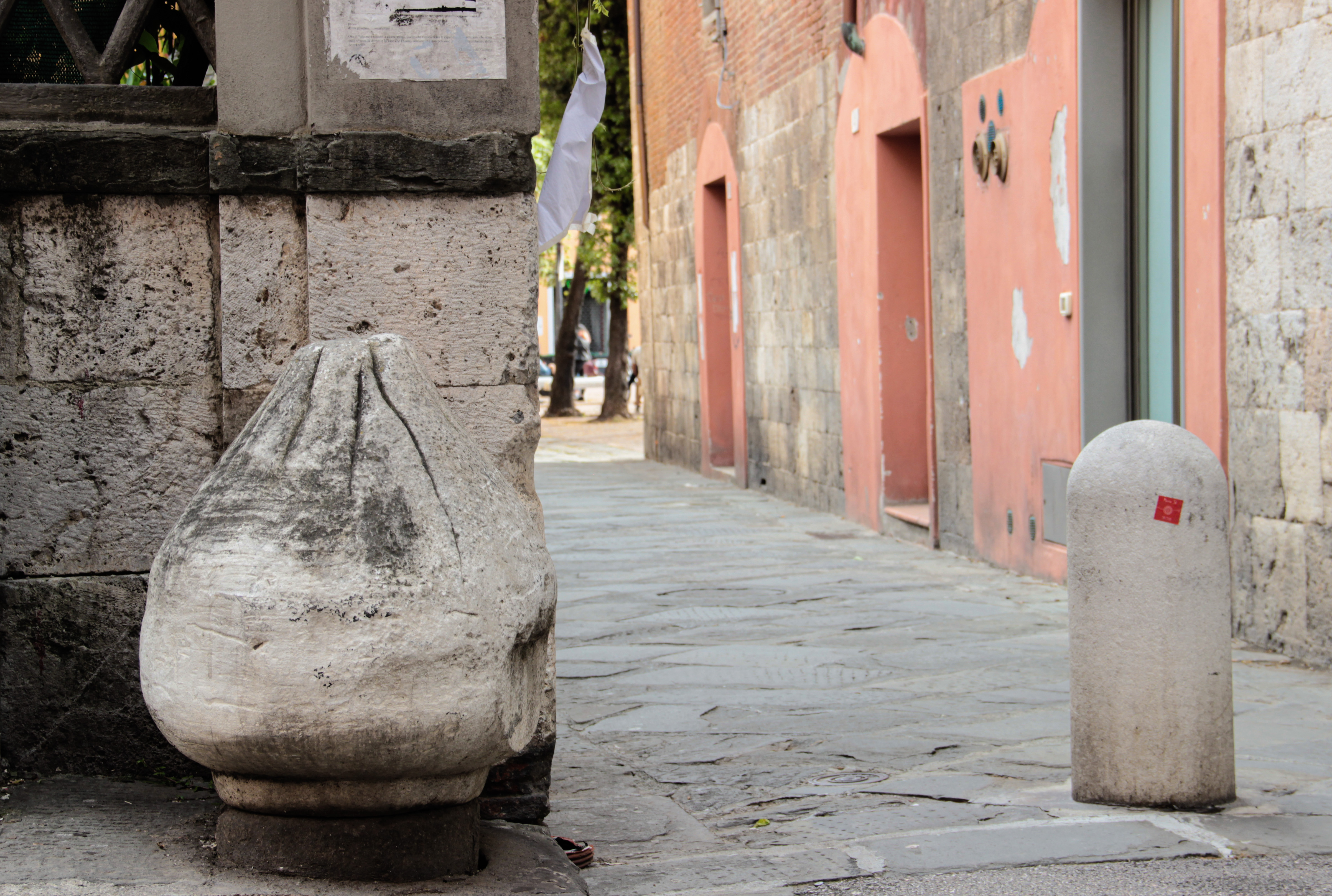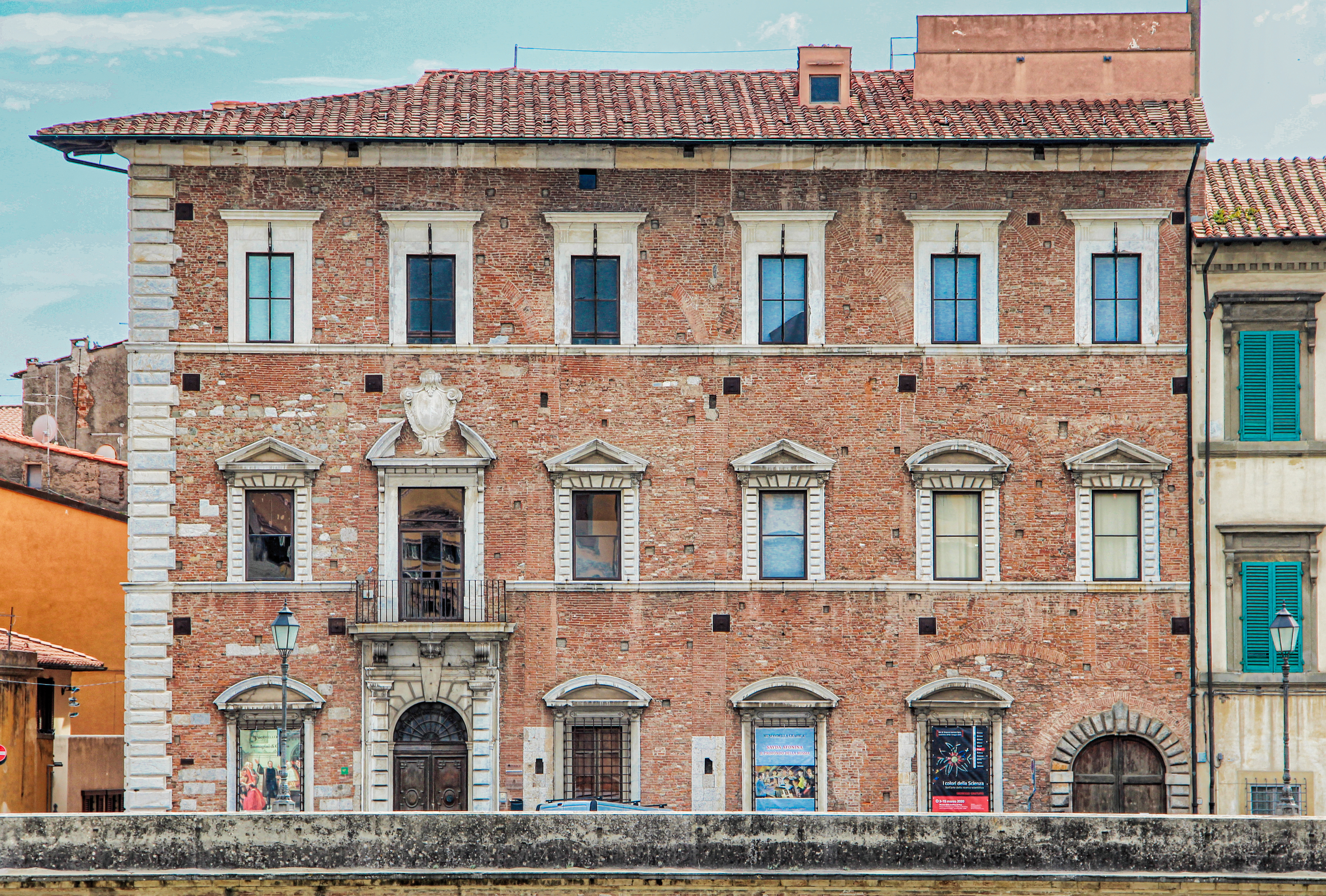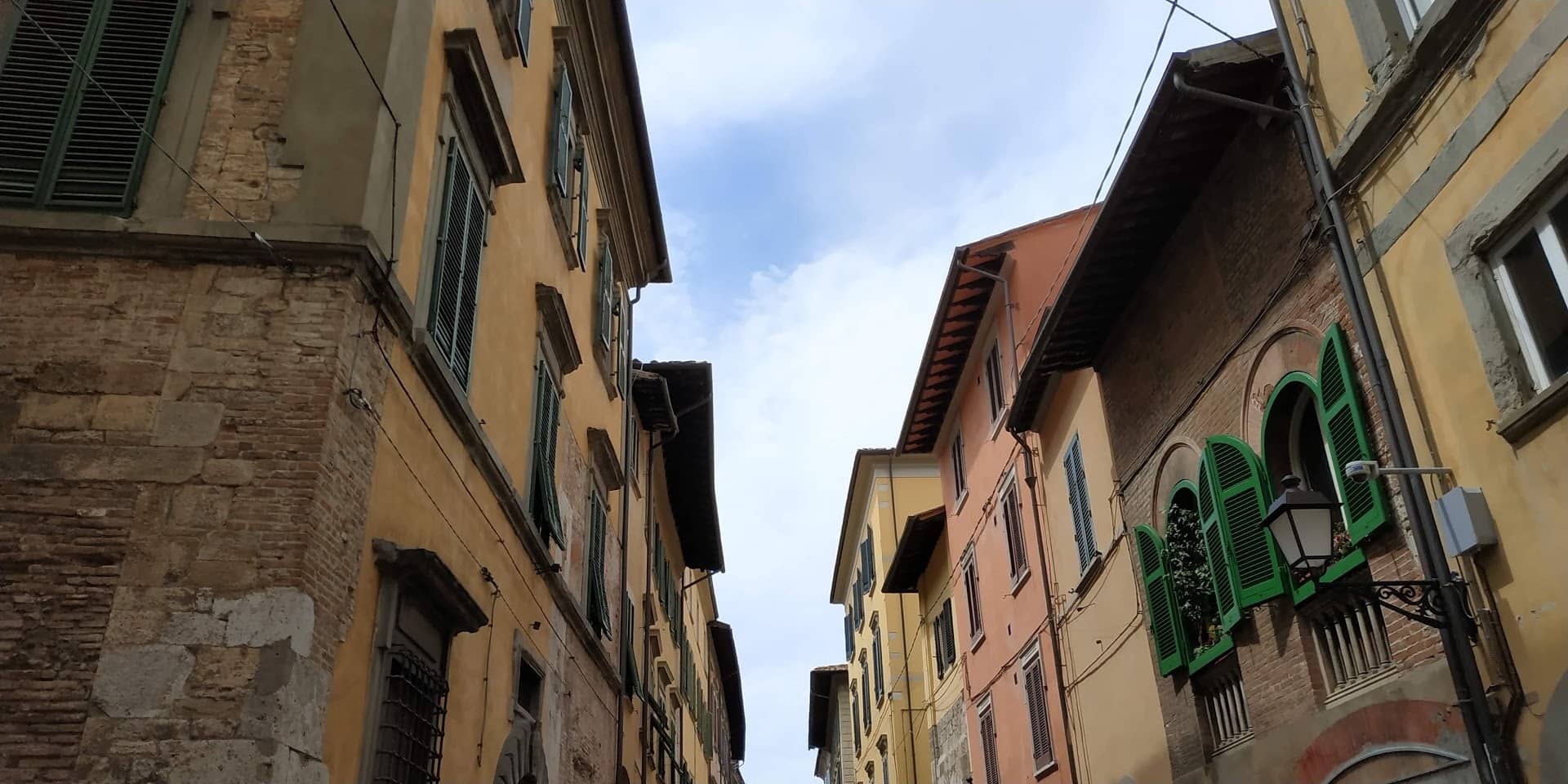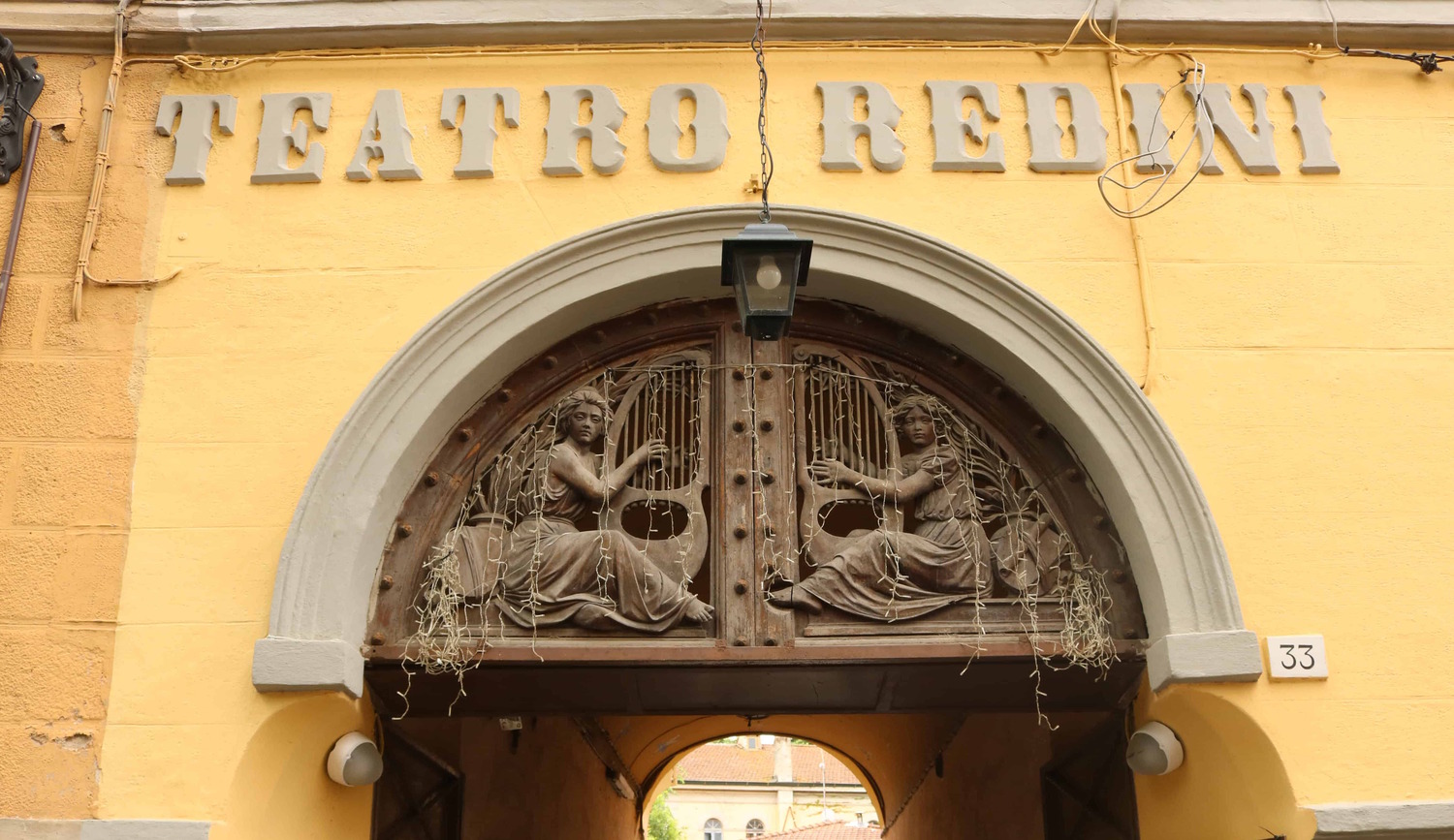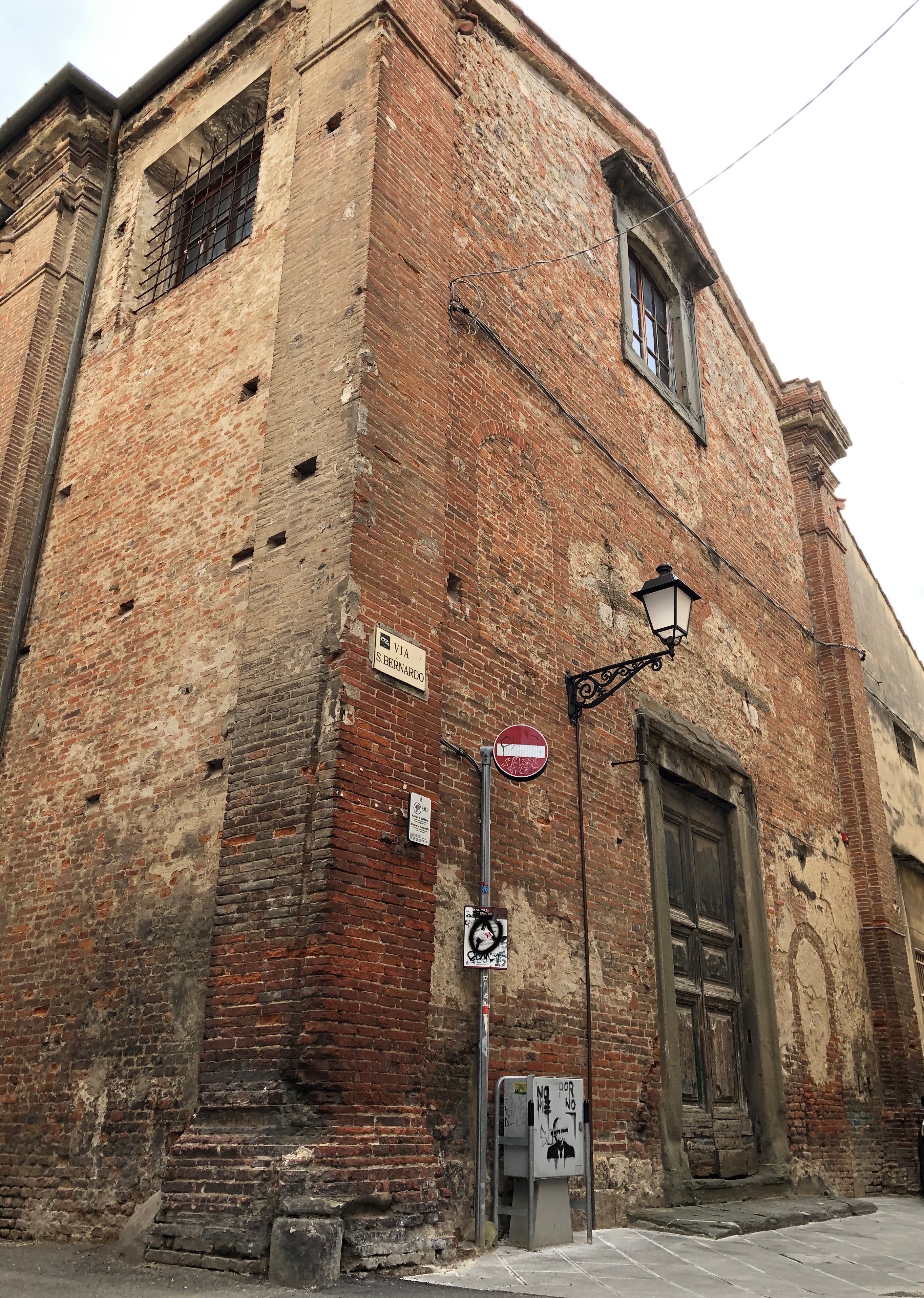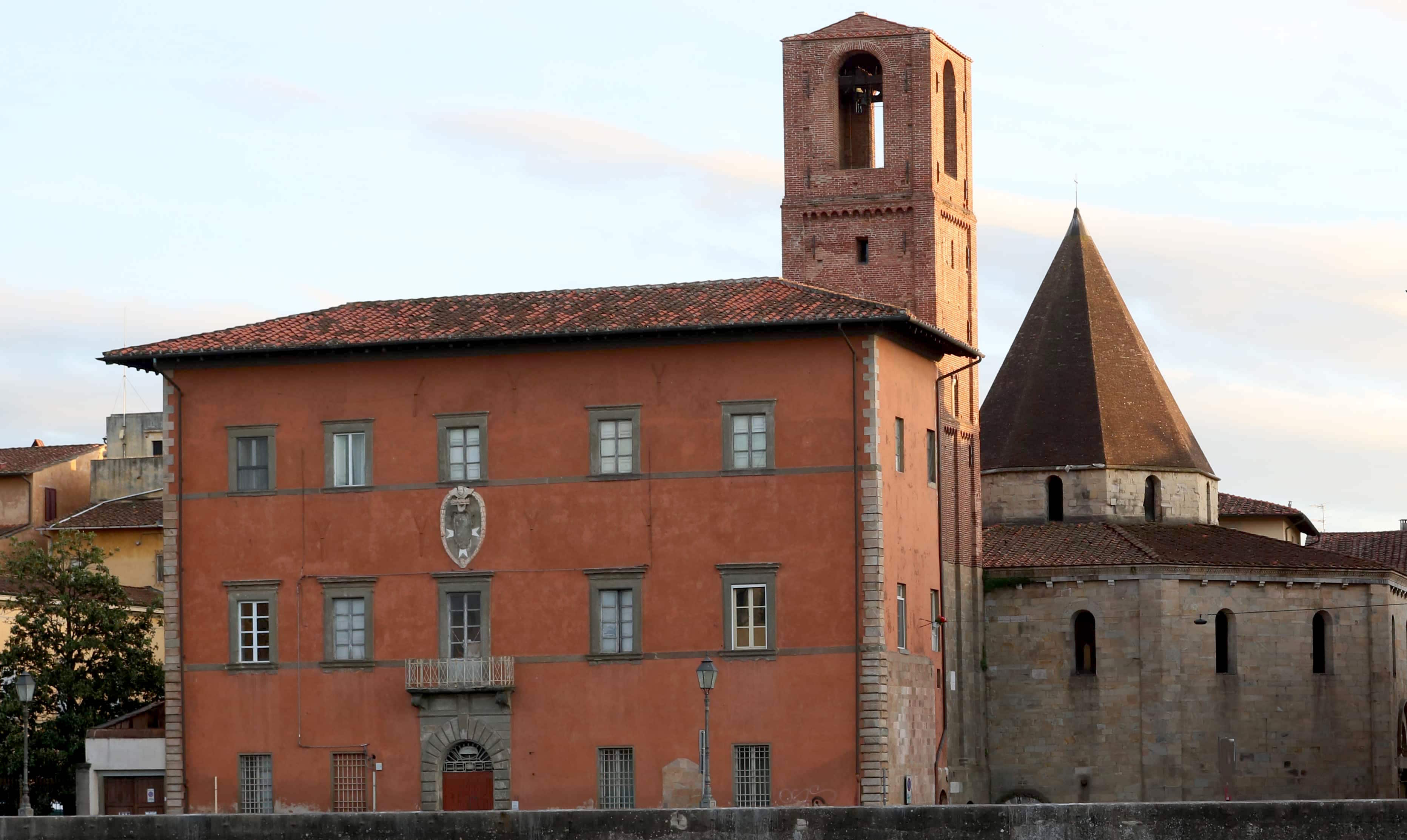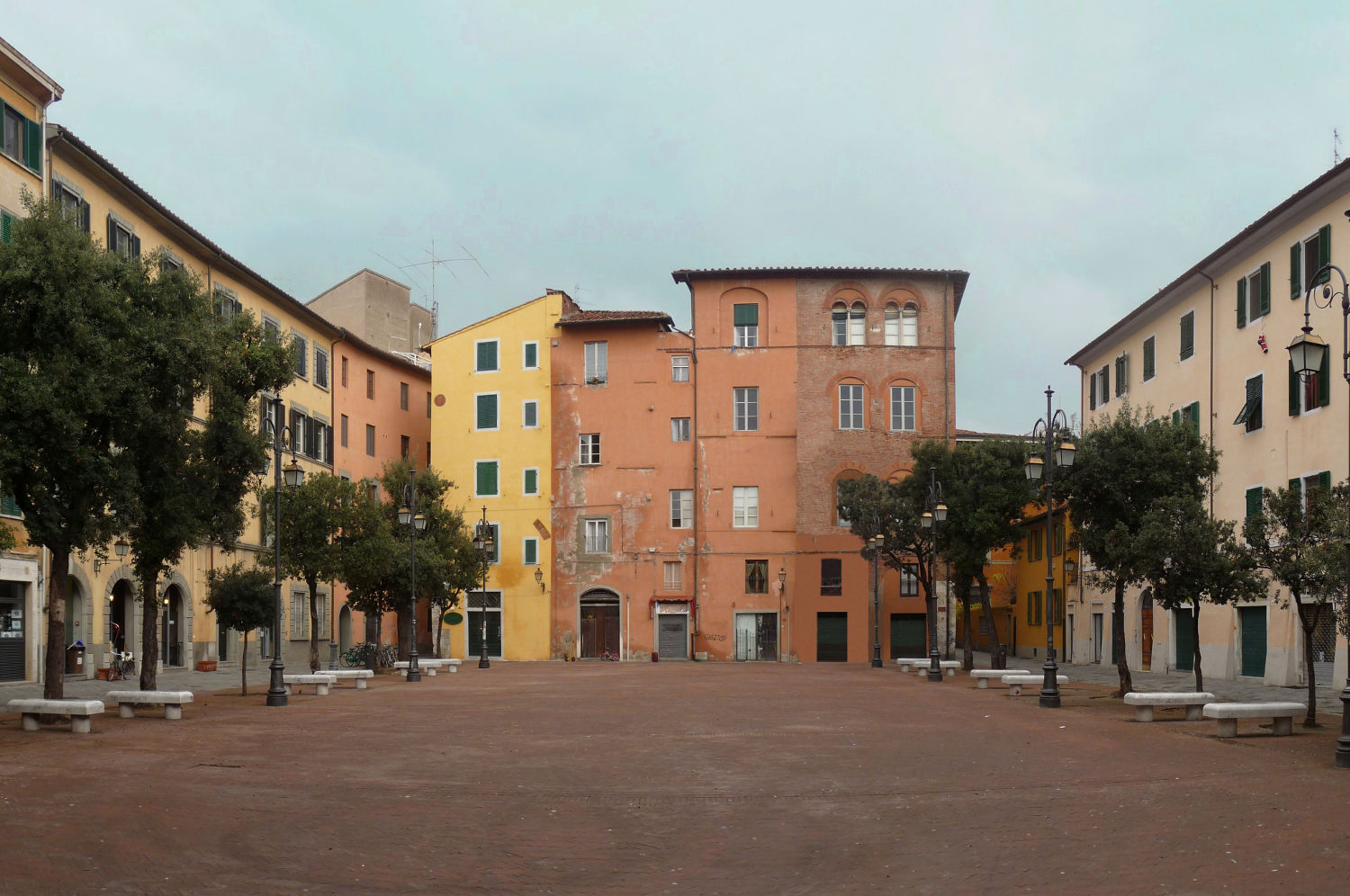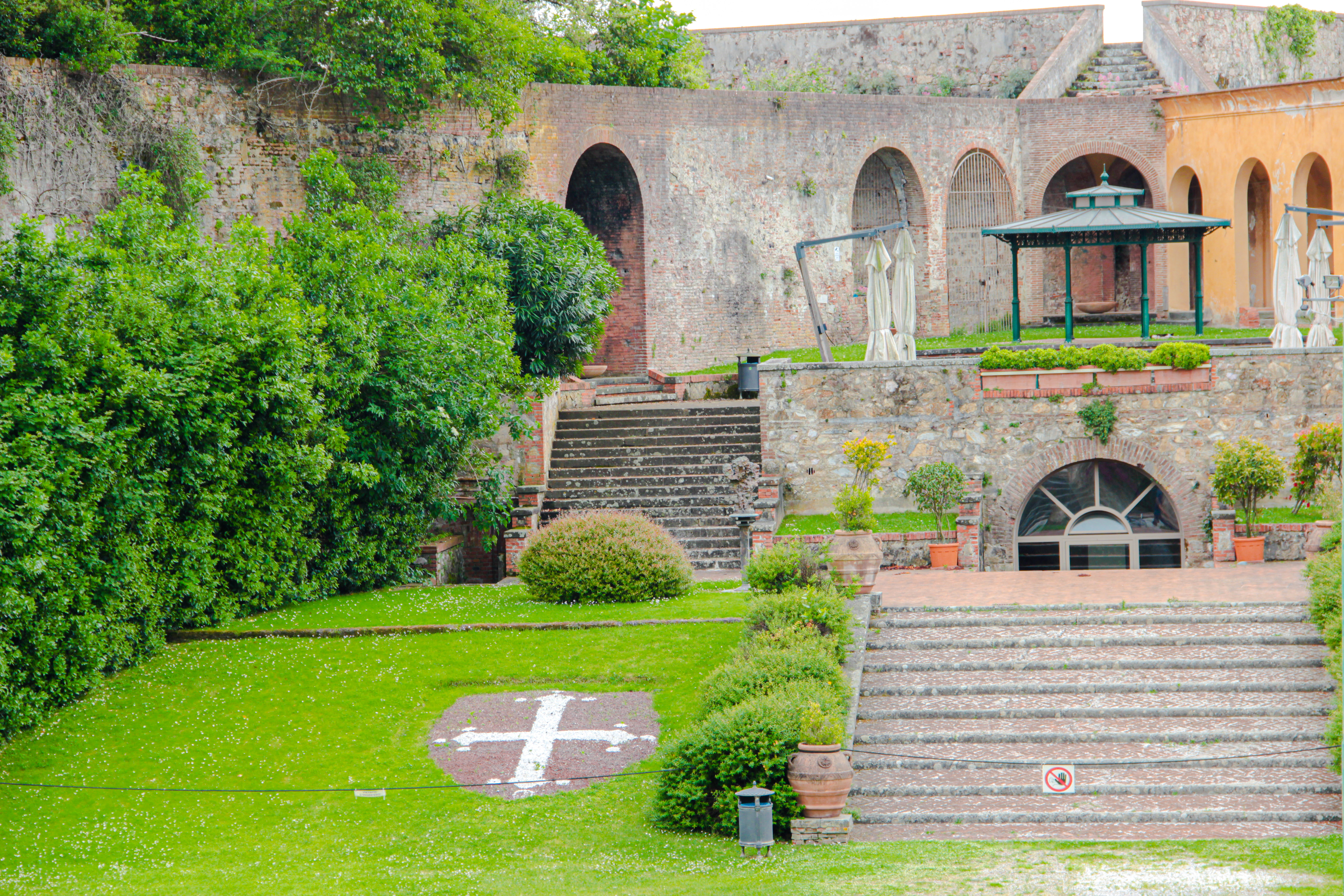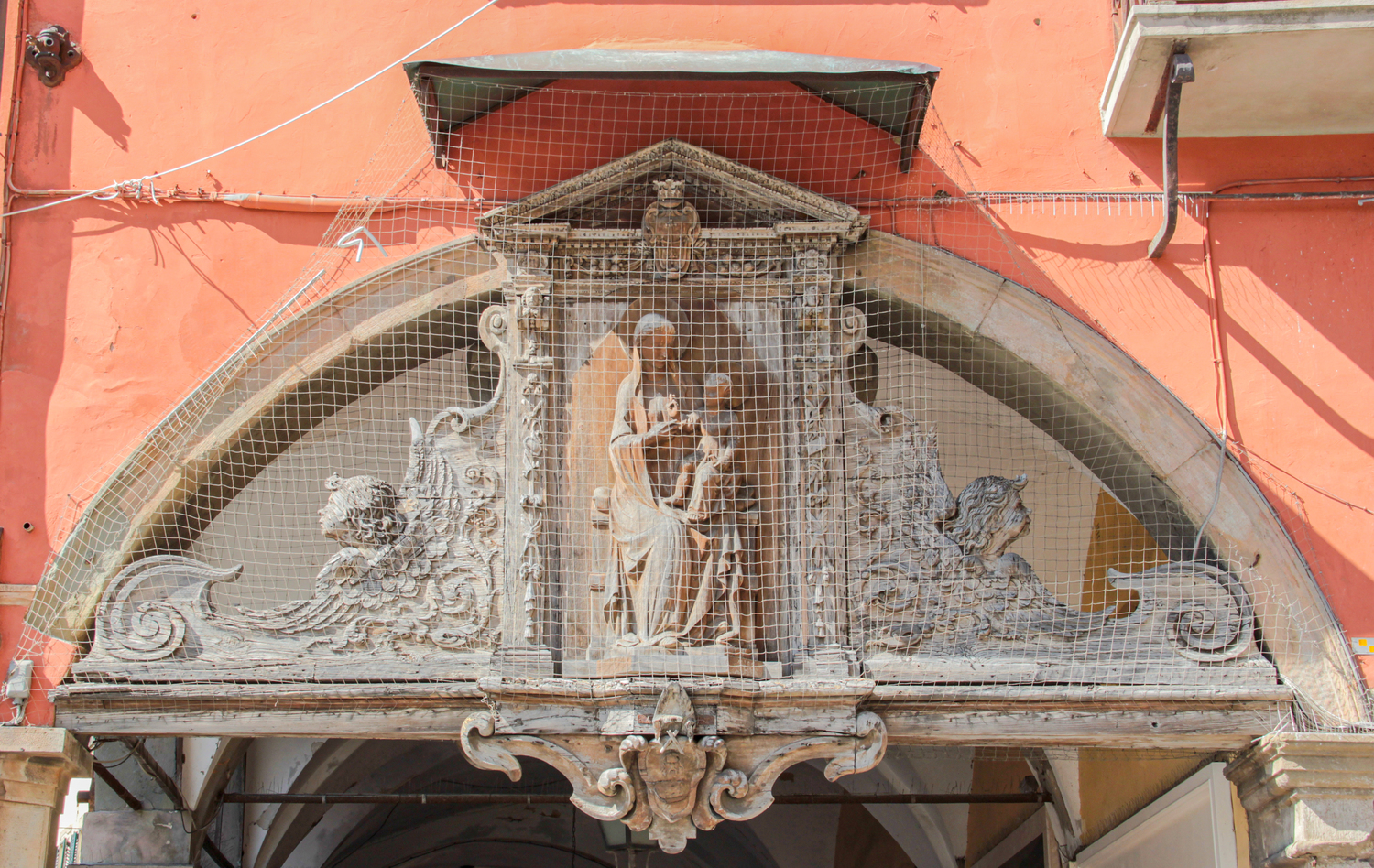Chiesa di San Martino
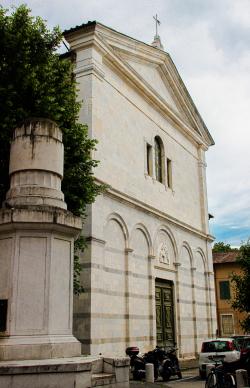
The Church of S. Martino in Chinzica is first mentioned in 1066; it stood on the Carraia Maiore, the most important roadway entering Pisa from the south, today called via S. Martino.
The Church is hall-shaped, with a short transept. It was completely re-built in the middle ages by count Bonifacio Novello della Gherardesca, who transformed the Cure into a convent for nuns.
The lower story of the Church front, in white marble, is decorated with five dead arches and the Church door at the centre, while the upper story is the result of renovations in the 1600s. The rest of the building is entirely built in brick. The apse is divided into three sections by pilasters; round windows bordered by brick mouldings, the central one of which is larger than the other two, are placed between them. These are fruit of renovations in the 17th century.
Under the eaves of the walls and transept is a decoration of small deadarches anda cornice of rows of staggered bricks, enriched by the addition of pottery basins, mostly of Pisan manufacture (“maiolica arcaica”), dating from the construction of the church.
Inside the Church, renovated in the 17th century, is a wooden painted crucifix by Enrico di Tedice (mid 13th century), while in the chapel of the Holy Sacraments there are 14th century frescos by Giovanni di Nicola e Cecco di Pietro. A series of paintings by important artists, such as Palma il Giovane, Orazio Riminaldi, Jacopo Ligozzi, il Passignano and the Melani brothers, hang above the modern altars.

